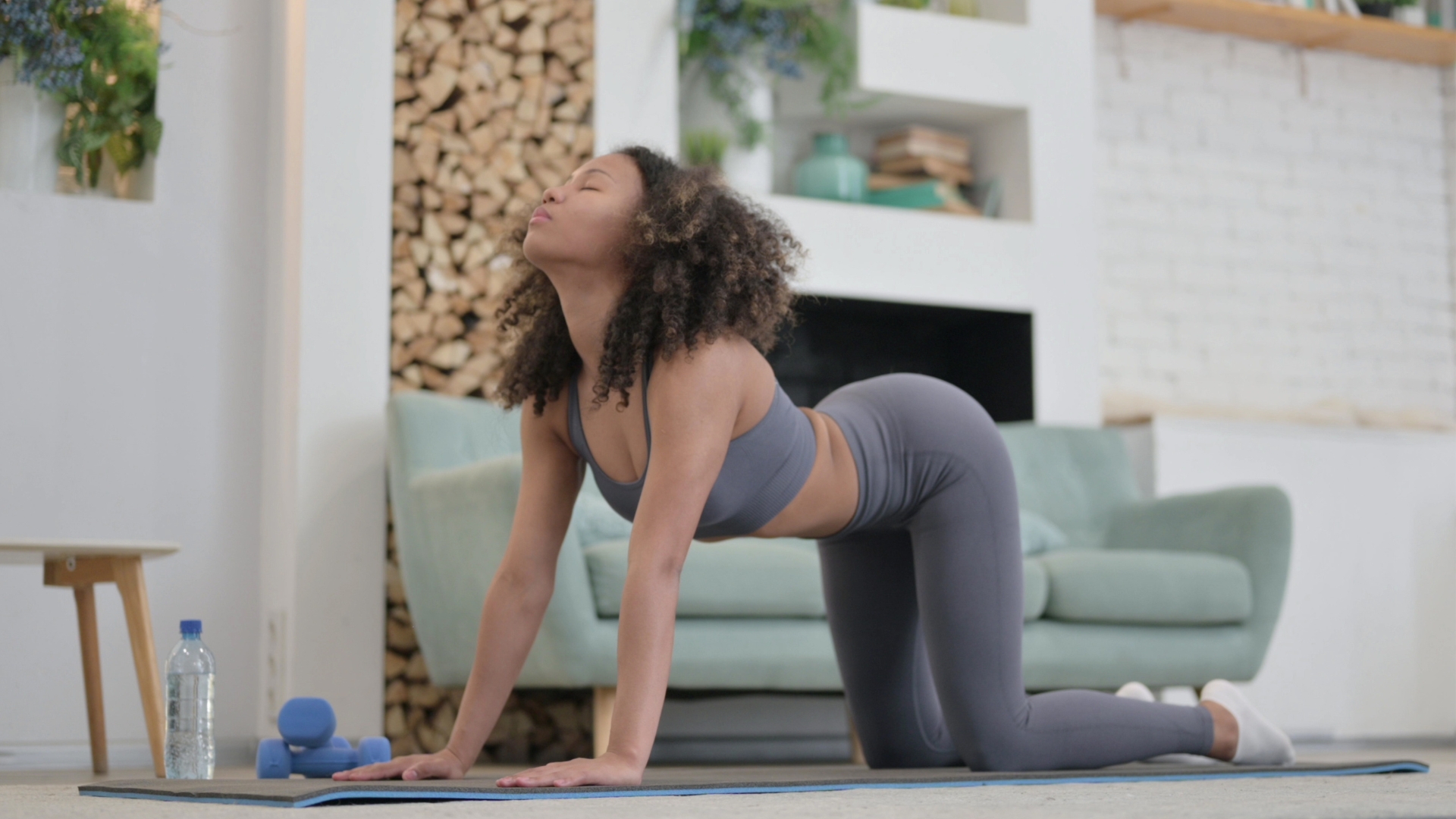Five easy Pilates moves to do at home that will keep your back flexible as you age
Try these five exercises to help your spine feel more supple in minutes


It's no great secret that Pilates can help you build strength, especially in your core—but this simple practice is also incredibly effective for helping you maintain spinal mobility.
“Spinal mobility exercises involve movements in different directions, planes and dimensions to create space and help ease tightness,” says Noemi Nagy-Bhavsar, Pilates instructor and founder of Beyond Move.
Nagy-Bhavsar has created this five-move Pilates routine to improve flexibility and range of motion in your back.
“These exercises not only help your spine but are also closely related to the alignment of your feet, knees hips, and neck,” she says.
Five Pilates moves for your back
A post shared by Fit&Well (@wearefitandwell)
A photo posted by on
You can perform the movements as a sequence or separately if you’re short on time.
- Mermaid
- Shoulder bridge
- Arm opening
- Cat-cow
- Thread the needle
1. Mermaid
Reps: 4-6 each side
“This is a well-loved exercise in Pilates. It mobilizes the thoracic spine [the mid-back] with some lateral flexion [side bends], stretching and lengthening, and improving mobility. It’s great for upper body stiffness and also for scoliosis,” says Nagy-Bhavsar.
Start your week with achievable workout ideas, health tips and wellbeing advice in your inbox.
How to do it:
- Sit cross-legged with your spine straight, and your shoulders back and relaxed.
- Inhale as you raise your right arm overhead and over to the left side, placing your left forearm on the floor.
- Return to the starting position and repeat on the other side.
2. Shoulder bridge
Reps: 3-8
“Make sure you distribute your body's weight evenly to your feet, hips and shoulders,” says Nagy-Bhavsar.
“Typically, everyone lifts and shifts their weight up to the shoulders and arches their back. This will not help alleviate back pain.
“Moving vertebrae by vertebrae helps to isolate movements and mobilize the spine.”
How to do it:
- Lie on your back with your knees bent and feet flat on the floor close to your buttocks, arms by your sides.
- Inhale as you gently lift your tailbone and lower back, rolling the spine up for a count of eight to 10 seconds, until your shoulder blades are off the floor.
- Exhale as you gently roll back down, one vertebrae at a time, for a count of eight to 10 seconds.
3. Arm opening
Reps: 3-5 each side
“This exercise is a spinal rotation, especially good for the thoracic area and lower back,” says Nagy-Bhavsar.
“Try not to overextend the shoulder. Instead, move with your back, spine and head/neck, and follow the movement with your eyes.”
How to do it:
Nagy-Bhavsar advises you should avoid this exercise if you have acute shoulder pain.
- Lie on your right side, knees bent at 90°. Support your head with your right arm or a cushion.
- Inhale as you reach and extend your left arm on the floor in front.
- Exhale as you sweep your left arm across your body, rotating your upper back and chest toward your left side.
- Inhale as you slowly return to the starting position and repeat.
- Complete all the repetitions on one side, then repeat on the other side.
4. Cat-cow
Reps: 6-8
“Cat-cow moves the spine from flexion to extension, helping to mobilize the spine, creating space. It also helps to release tension in the neck.
"It’s especially nice for those who work at a desk and don’t move for long periods of time. It can be done in a standing and sitting position, too,” says Nagy-Bhavsar.
How to do it:
- Start on your hands and knees, with your shoulders over your wrists and hips over your knees.
- Exhale as you gently round your spine upward, tucking your chin toward your chest and pressing through your hands (this is cat pose).
- Inhale as you gently arch your back, lifting your chest and tilting your head slightly upward (this is cow pose).
- Move your spine one vertebrae at a time with your breath.
5. Thread the needle
Reps: 3 each side
“Adding a bit more to the cat-cow stretch, threading the needle is a combination of a rotation with an extension, lengthening the back and spine.
"It’s divine for mid-back tightness and back pain and makes you feel good as it improves the range of movement in the upper body,” says Nagy-Bhavsar.
How to do it:
- Start on your hands and knees with your shoulders over your wrists and hips over your knees.
- Inhale as you lift your right hand above you, twisting to the right to reach higher.
- Exhale as you thread it between your left hand and left knee, rotating your torso to the left and lowering your right shoulder toward the floor.
- Hold here for two breaths.
- Inhale as you reverse the movement, twisting your torso to the right and reaching your right hand up.
- Do all your reps on one side, then repeat on the other side.
Becks is a freelance journalist and writer with more than 7 years of experience in the field. She writes health and lifestyle content for a range of titles including Live Science, Top Ten Reviews, Tom’s Guide, Stylist, The Independent, and more. She also ghostwrites for a number of Physiotherapists and Osteopaths.
Health has been a big part of Becks’ lifestyle since time began. When she’s not writing about the topic of health, she’s in the gym learning new compound exercises. And when she’s not in the gym, she’s most probably reading.
You must confirm your public display name before commenting
Please logout and then login again, you will then be prompted to enter your display name.
